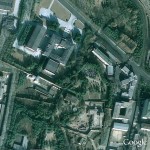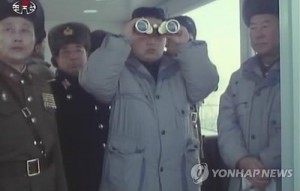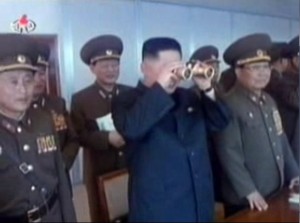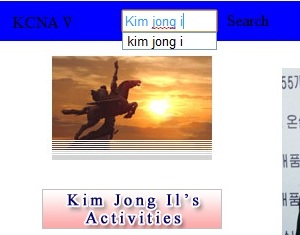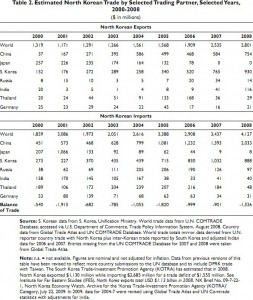UPDATE: For the second time in as many weeks, the DPRK’s central bank makes the news. According to KCNA:
A national meeting of commercial officials took place at the People’s Palace of Culture on Monday.
The meeting reviewed the gains and experience made in the past commercial service and discussed tasks and ways for improving this work.
Present there were Premier Choe Yong Rim, Minister of Light Industry An Jong Su, Minister of Foodstuff and Daily Necessities Industry Jo Yong Chol, Chairman of the State Price Commission Ryang Ui Gyong, President of the Central Bank Paek Ryong Chon and other officials.
According to Yonhap, Paek Ryong Chon is the third son of the late foreign minister Paek nam-sun.
ORIGINAL POST: A big hat tip to Chris Green who translated an interesting article on recent changes to DPRK banking regulations. The original article in Korean is here.
According to Chris’ translation of the article:
The Chosun Central Bank is said to have raised interest rates by 1.8 times. Customers are also now able to get instant access to their money. As a result, the bank’s total deposits are also said to be growing.
These measures appear to be the bank coming forward to guarantee deposits given that people have been unwilling to put their money there since the 2009 currency redenomination.
North Korea watchers are observing the situation, saying that there is a chance that measures like these could be an indicator of financial sector reform.
Speaking on the 1st, one such source said, “I hear that the number of people putting their money in the bank is growing. The total reserves of the Chosun Central Bank are also growing. The causes of this are that access to withdrawals has recently been freed up and the interest rate has risen steeply.” According to the source, the interest rate offered by the bank was previously 3%, but has recently risen to 5.4%.
The Chosun Central Bank is a government entity under the Cabinet, doing the job of both a central and commercial bank at the same time. It offers savings, loans and insurance services.
North Korean people can deposit money there and earn interest on it; in this, it is much the same as the Post Office, which also takes deposits and gives interest.
In terms of allocation in North Korea, the state does it by force, and there are also cases of deposits being coerced. Indeed, until now it has been hard for North Korean people to recover capital deposited with the bank.
The source explained, “At times when the economic situation has been bad, it has not just been hard to get interest, it has even been common to illegally have to give 20% of the value of the capital to Central Bank management and then take the rest,” but added, “Recently, North Korean people have been able to get hold of their deposits surprisingly easily, and the rumor ‘We can get our money! And the interest has gone up!’ is going around.”
Cho Byung Hyun of the Industrial Bank of Korea’s research institute explained more, saying, “Following the failure of the 2009 currency redenomination, people disliked putting their money in the bank so, for the circulation of money, the bank instituted a policy of allowing instant access to deposits and raising interest rates.”
North Korea suffered serious fallout from the currency redenomination, including rapidly rising prices and the execution of its architect, former Workers’ Party financial planning head Pak Nam Gi.
However, it is also possible in part to interpret the failed redenomination as an opportunity to activate capitalist banking practices.
Cho went on, “We know North Korea has recently been preparing financial reforms. At the moment, banks under existing trade banks etc are controlled by the Central Bank, but this can be seen as propelling reform in the direction of giving independence to each bank.”
Meanwhile, Professor Lee Sang Min of Joongang University economics department pointed out, “This can be seen as helping with the introduction of a capitalist system in North Korea in the long term. It is an opportunity for the North Korean people to learn about a capitalist banking system.”
However, it is as yet too early to see this sort of phenomenon as meaning that the financial system of North Korea is settled. As one defector pointed out, “For this to develop into a system, the North Korean authorities shall have to spend a long time building trust.”
Another North Korea source added, “The dollar tended to be thought of by the North Korean people as the standard currency, but the Yuan is gradually moving to center stage.” This is analyzed by experts as being down to recent economic exchanges between the North and China and the rising value of the Yuan.
Fascinating stuff. Thanks for posting, Chris.
I am actually looking for information on the DPRK’s monetary system, so if you have any good papers, please send them my way.

